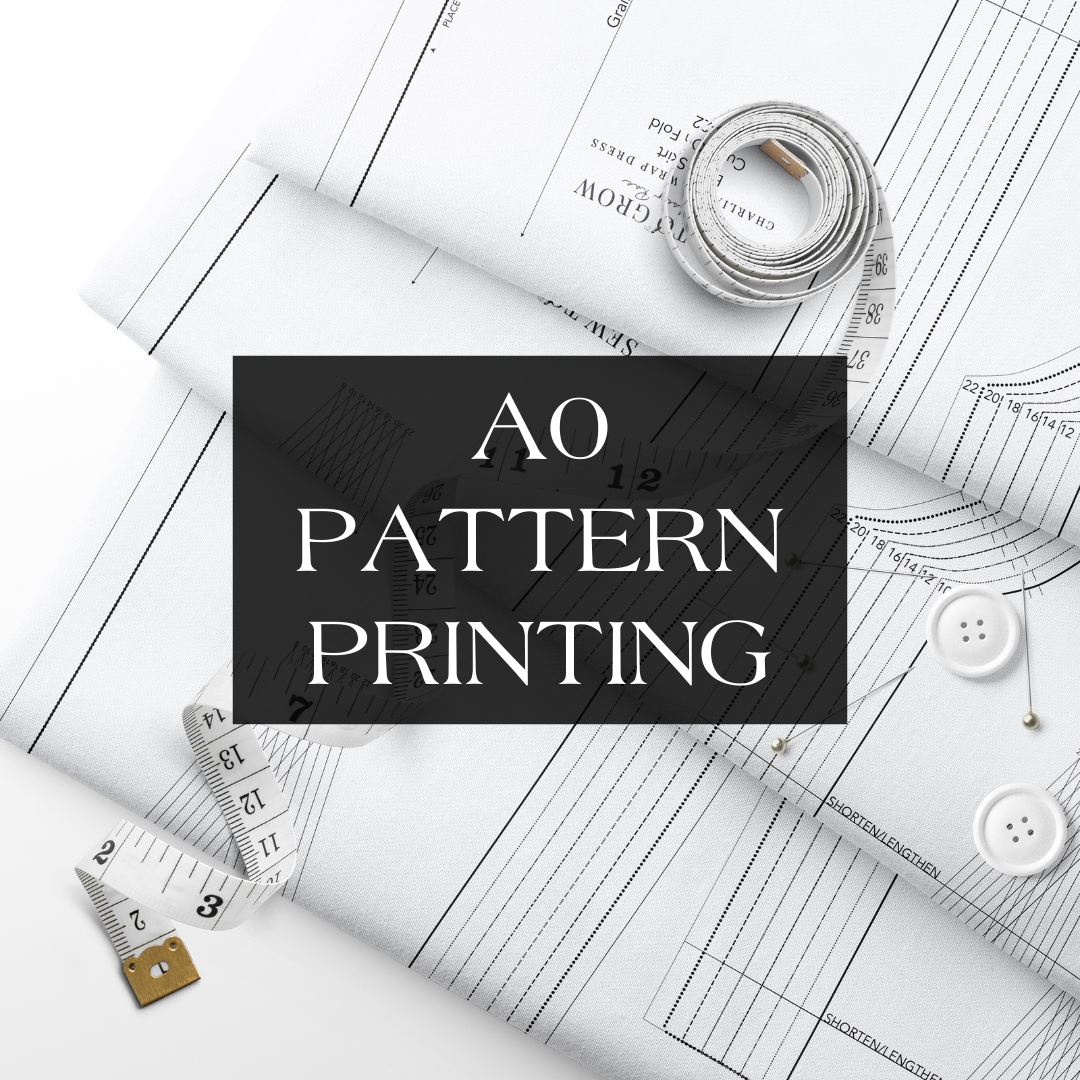So, you want to start your own sewing business? Fabulous! Starting your own sewing business can be a really exciting and rewarding journey. It can also offer a lifestyle that is more suited to working around your family life. If you are wanting to start your own business sewing handmade items, chances are you are already an experienced sewer with a good sewing kit under your belt. So let's skip the sewing kit and go straight to what you need to know about business.
Now you have decided to start your own sewing business, you may be a little lost on where to begin. Follow these 7 easy steps to get started in no time!

Step 1 - Assess the market
Do some brainstorming. As they say, fail to plan and plan to fail. Who will your ideal customer be? Is there a niche your looking to fill in the market? What will set you apart from the rest? These are some good starting points to consider when you are planning your business.
Without knowing who your ideal customer is it will be impossible to gear any marketing towards them. I do suggest starting off small rather than attempting a full scale family wardrobe business, putting your eggs in every basket in this sense isn't the best idea. For example, sewing men's work-wear and baby girls headbands really isn't going to work well together. If you start off with a small line, say headbands, you can slowly branch out and expand when you are ready. By trying to do it all at first you are likely to wear yourself out, and confuse customers.
Step 2 - Decide on a business structure & register your business
- Most people will start off with a sole trader business structure. This is certainly the easiest way and lowest cost to get up and running. Some other options include a partnership, company or trust. It would be worth speaking to an accountant or professional advisor to see which structure would best suit your situation. Setting up on the right foot can save you a headache down the road.
- Apply for an ABN & AUSkey through the Australian Business Register.

Step 2 - Decide on a business name
- Decide on a business name. You may want to use a combination of your name, or a quirky pun on words. Make it something easy to remember and pronounce though so people won't forget your business. Another important thing to do is check it the name is available. If you are located in Australia you can check business name availability here by using the "Search Business Names Register" function. You will then need to register your business name with ASIC, but before doing that make sure the domain name is available too (see step 3). It is also wise to also check with IP Australia to ensure the name you have chosen is not registered with a trademark. You can check that here.
Step 3 - Choose a selling platform
- A domain name is your website address. It is wise to have your domain and business name matching so it makes it easier for customers to find you. So before you jump the gun and register the business name (step 2) make sure you can also get the matching website address. I suggest checking out GoDaddy or Crazydomains for obtaining the domain name. Some people skip having their own website and prefer to sell on social media platforms (Facebook and Instagram) with "DM me to order". The downside of selling only on social media platforms and not having a website is "DM me to order" is a lot more time consuming for customers (and you). It also means you cannot re-market to customers, send email campaigns and you wont receive any 3am spur of the moment purchases. If you are wanting to make a business that is scale-able in the future, I whole hardheartedly suggest getting a website.
- Etsy is definitely a good platform. A benefit of this is a lot of people already browse Etsy when on the hunt for handmade items. The downside is you are more restricted as opposed to your own website which can be customized to suit your specific needs.

Step 4 - Product Safety & Care
- Clothing and textiles, by law, have certain care labeling that is required. Further to this you want to ensure that the garments you are creating meet product safety laws. Garments must meet mandatory labelling requirements to be sold. I do suggest to read this document from Australian Competition and Consumer Commission (ACCC) as it has all the information required for care labels.
- In regards to apparel safety, Children's Apparel Product Safety Guidelines (Click to view) must be adhered to if you are selling children's clothing.
Step 5 - Insurance
- There are many types of insurance, however, Public Liability Insurance is one you cannot do without (compulsory). Other insurance, such as workers' compensation is only compulsory if you have employees. An insurance broker will be able to assist you with finding a suitable insurance policy tailored to your needs. For more information I suggest to look at this Australian Government website.
Step 6 - Supply of Materials & Profit Margins
- Finding a good supplier for fabric and notions is vital to any sewing business. Not only is the quality of fabric important but also the availability. Many fabric companies work on "pre-order" basis and it is important to factor in the delivery times and reliability of those delivery time frames. Is your fabric supplier willing to go above and beyond? Finding a supplier that is keen to work with you and see your business grow is important. By ordering fabric from a small business you have the benefit of having a real life person to contact if you have questions, a specific thing your after, or just general sewing questions.
- Well now is the time all those 8th grade maths lessons will come in handy. It is important to do some calculations of your cost of materials, overhead expenses labour and profit margin. Knowing your numbers is a vital part of business. Don't undervalue your skills and expertise as a seamstress. If people are not willing to pay your worth, then they are most likely not your target audience and should be shopping at a *cheap mass production shop*.

Step 7 - Marketing
- Along with many other skills, marketing and having some tech skills are vital in business. Make a plan on how you will be driving traffic to your website. Will it be through social media, Google ads, Tik-tok. There are so many options out there. I do suggest doing some research in this field. Although you can pay other companies to manage your paid marketing for you, it is really important to know the basics of how to drive traffic. In general, you will need a minimum of 100 people a day to your website to start turning over some decent revenue. Out of those 100 people a day, you can expect 1 to 2% of those to convert to a sale. You could have the best website, and best product in the world, but the online space is huge! Without a clear plan on how you will drive traffic other things will not fall into place easily.







Comments
Hey there,
Hope you and your business are doing well. We’ve all been through so much this year!
I’m really sorry to bother you, and I know you are super busy, but I have been checking your website, and it seems that you are not ranking well for your ad words and key phrases. I actually help businesses like yours get a better ranking in google by using 10 proven techniques below.
I would really love the opportunity to work with you and your business, and bring your website to the top of Google’s list – the sweet spot where you get clicks and more business!
Please let me tell you some of the techniques that I can use below to help you get a better ranking in google search:
1. Title Tag Optimizations are missing, I can add these to your site.
2. Meta Tag Optimization descriptions are absent, I can add them too.
3. Heading Tags Optimization – No problem getting those put in there.
4. Targeted keywords are not placed into tags correctly.
5. Alt / Image tags Optimization is not present – it would take me seconds to write these.
6. Google Publisher is missing; I can set this up for you
7. Custom 404 Page is missing and I can create this for you.
8. The Products are not following Structured mark-up data, let me edit that in google webmaster tools.
9. Website Speed Development (Both Mobile and Desktop) I can make some tweaks and show you a speed performance using GTMetrics or Pingdom
10.Content Creation SEO work – As a native English speaker, I can create fantastic articles that people will want to read and share, these will bring business to you by word of mouth rather than expensive promotion via google paid search.
I’m sorry if this sounds a little technical, but rest assured, these techniques will certainly improve you ranking in search.
If you are interested then please let me know. I will send to you our Prices and Packages
Note: – If you are interested then we will send you, optimization report of your website.
Thank you kindly for your time and consideration,
Looking forward to working with you.
Kindest regards,
Philip Nutt
Spread the love!
Your website is very inspiring with high-quality content. We are sure that you will find additional useful information on our website. Come on, visit us at Garmen Bandung and we can collaborate with each other.
Warm Regard.
Your website is very inspiring with high-quality content. We are sure that you will find additional useful information on our website. Come on, visit us at Konveksi Seragam Kerja and we can collaborate with each other.
Warm Regard.
I’m interested to do this
I am about starting my own sewing business, please I need some professional advice
Please how can I attract new customers and retain old customers in the shop
Your website is very inspiring with high-quality content. We are sure that you will find additional useful information on our website. Come on, visit us at Konveksi Seragam Kerja and we can collaborate with each other.
Warm Regard.
I want to know about how to start my own business easily
hi im also interested in taking my business further but I’m scared to resign at work how can you assist me,Coz I love sowing with all my heart
Hi I’m interested in taking my business further but I’m a one girl band and scared to push further in case I can’t cope! Can you suggest any further reading about how to combine all the basics of social media to work with a website? I’m 60 years old and I get very confused about social media but once I’m shown how I’m ok. Your article is great so thank you!